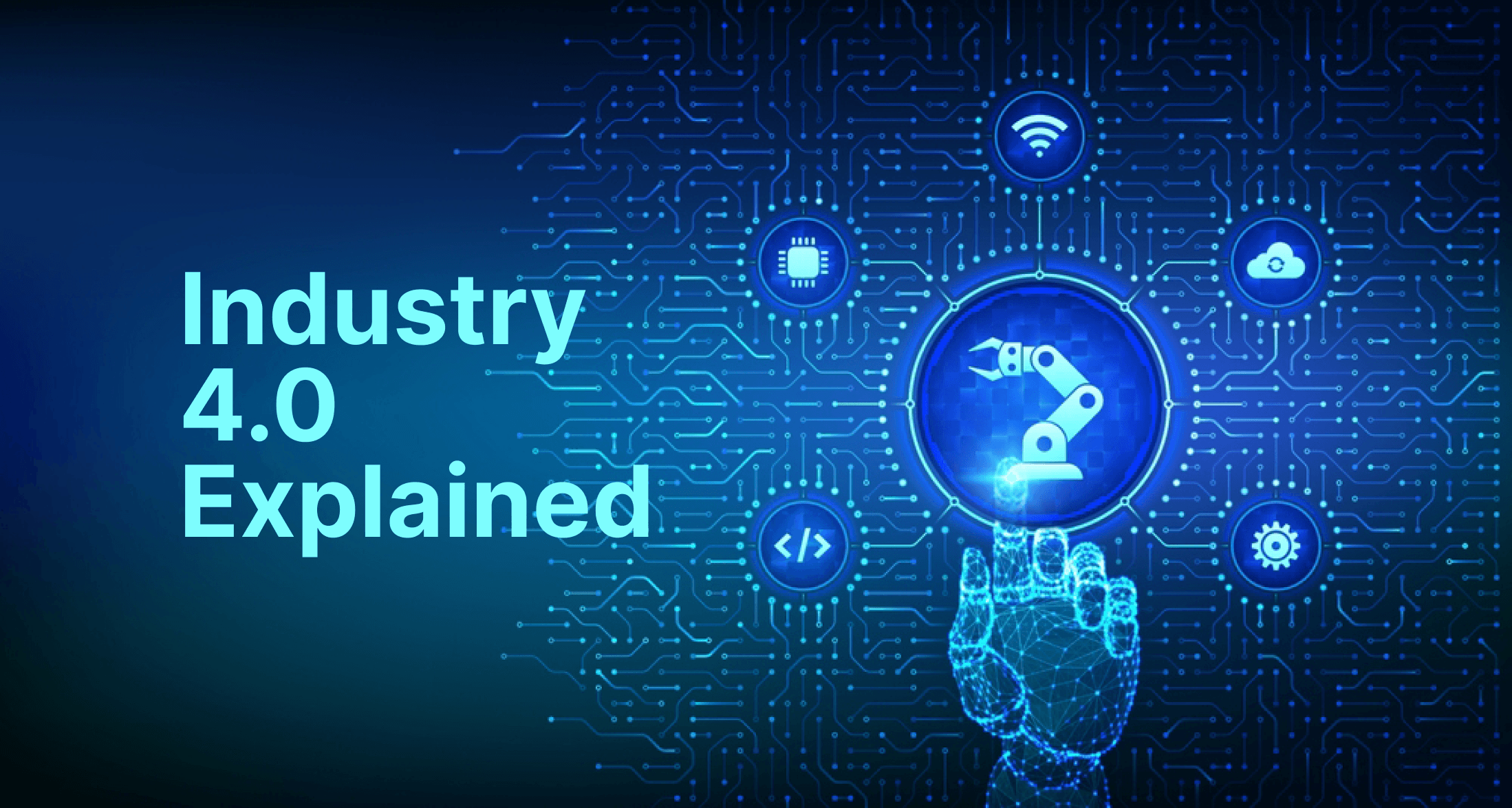Blogs
Industry 40
Industry 4.0 Explained: Revolutionizing the Future of Manufacturing
By Muhammed Abdulla NC | Published on Mar 24 | 5 Minute Read

Imagine a world where factories think for themselves, where machines communicate with one another, and where production processes optimize automatically. Welcome to Industry 4.0, the Fourth Industrial Revolution. Unlike its predecessors, Industry 4.0 focuses on digitalization, connectivity, and smart technologies to reshape how we manufacture products. As businesses strive to stay competitive in an evolving landscape, understanding and embracing Industry 4.0 has never been more critical.
Statistics show that by 2025, Industry 4.0 is expected to generate $3.7 trillion in economic value globally. Whether you're a manufacturer, a tech enthusiast, or simply curious about the future of industry, this guide will take you through everything you need to know about this revolutionary movement.
What is Industry 4.0?
At its core, Industry 4.0 represents the integration of advanced digital technologies into manufacturing systems to create smarter, more efficient operations. This movement combines the physical and digital worlds, leveraging data to make real-time decisions and improve processes. To put it simply, it’s about making manufacturing smarter.
Historical Context: The Four Industrial Revolutions
-
Industry 1.0 (18th Century): Introduction of steam engines and mechanized production.
-
Industry 2.0 (19th Century): Mass production enabled by electricity.
-
Industry 3.0 (20th Century): The rise of automation and computers.
-
Industry 4.0 (21st Century): Digital transformation driven by IoT, AI, and big data.
Core Technologies Driving Industry 4.0
Industry 4.0 leverages a suite of technologies to deliver its transformative impact. Let’s dive deeper into the most significant ones:
1. Internet of Things (IoT)
IoT connects machines, sensors, and systems to share data and insights in real-time. In manufacturing, IoT enables predictive maintenance, efficient supply chain management, and enhanced safety.
Example: Sensors in a smart factory detect machinery issues before they escalate, reducing downtime.
2. Artificial Intelligence (AI)
AI helps manufacturers analyze vast amounts of data, identify patterns, and automate decision-making processes. It’s the brain behind smart factories.
Example: AI algorithms optimize assembly lines, increasing productivity and reducing waste.
3. Big Data Analytics
Big data collects and processes enormous datasets from sensors, machines, and systems. Analytics tools provide actionable insights to improve decision-making.
Example: Analyzing production data to pinpoint inefficiencies and implement cost-saving measures.
4. Digital Twins
A digital twin is a virtual replica of a physical asset or process. It enables manufacturers to simulate, test, and optimize operations in a risk-free digital environment.
Example: A car manufacturer simulates assembly line changes using a digital twin to ensure minimal disruption.
5. Automation and Robotics
Automation ensures faster, error-free production, while robotics introduces precision and flexibility into manufacturing processes.
Example: Collaborative robots (cobots) work alongside human employees to enhance efficiency.
6. Cloud Computing
Cloud platforms enable manufacturers to store, access, and analyze data at scale, facilitating collaboration and innovation.
Example: A global supply chain uses cloud solutions for seamless coordination among partners.
7. Augmented Reality (AR)
AR enhances worker training and real-time troubleshooting by overlaying digital information onto physical environments.
Example: Technicians use AR glasses to view machine instructions while performing maintenance.
Benefits of Industry 4.0
Why should businesses invest in Industry 4.0? The benefits are manifold:
1. Increased Efficiency
Automation reduces manual intervention, saving time and resources. Processes become faster and more streamlined.
2. Cost Savings
Predictive maintenance minimizes repair costs and downtime. Real-time monitoring prevents costly production delays.
3. Improved Product Quality
Real-time monitoring ensures higher quality and fewer defects. Manufacturers can also use analytics to refine product designs.
4. Enhanced Customer Satisfaction
Customization and faster delivery times delight customers. Industry 4.0 makes it easier to meet unique client needs.
5. Sustainability
Optimized processes reduce waste and energy consumption, supporting environmental goals.
Challenges in Implementing Industry 4.0
While the benefits are clear, businesses face hurdles in adopting Industry 4.0:
1. Cybersecurity Risks
As factories become more connected, they are increasingly vulnerable to cyberattacks. Robust security measures are essential.
2. High Initial Costs
Implementing smart technologies requires significant upfront investment. However, the long-term ROI often justifies the expenditure.
3. Lack of Skilled Workforce
There’s a shortage of workers with expertise in IoT, AI, and data analytics. Upskilling programs are critical to bridge this gap.
4. Resistance to Change
Adopting new technologies often faces pushback from employees and management. Change management strategies can ease this transition.
Preparing for the Future: What’s Next After Industry 4.0?
Industry 5.0
The next wave, Industry 5.0, focuses on collaboration between humans and machines. Unlike Industry 4.0’s focus on automation, Industry 5.0 emphasizes personalization and human-centric solutions.
Emerging Trends
-
Edge Computing: Bringing data processing closer to devices.
-
Blockchain: Enhancing supply chain transparency.
-
Green Technologies: Achieving sustainability goals through smart systems.
Conclusion: Embrace the Revolution
Industry 4.0 is not just a trend; it’s a necessity for businesses aiming to thrive in a competitive market. By leveraging technologies like IoT, AI, and digital twins, manufacturers can achieve unparalleled efficiency, productivity, and innovation.
The time to act is now. Evaluate your organization’s readiness for Industry 4.0 and take the first step towards smart manufacturing. The future of industry awaits, and it’s smarter than ever.
Here are some related articles you may find interesting:

blog
The Role of AI in digital publishing
One such game-changing invention is artificial intelligence (AI), which has revolutionized several different industries, including digital publishing, amongst many others. The publishing process, the generation of content, and the provision of personalized reader experiences are all areas in which AI has enormous potential for improvement.

blog
10 Ways Workflow Automation Can Transform Your Business
Increasing efficiency through workflow automation can be a boon for your business, fostering efficiency and enabling better decision-making capabilities. By embracing workflow automation, businesses can attain a competitive advantage, drive functional excellence, and accomplish sustainable growth.
PLATFORMS & SOLUTIONS

